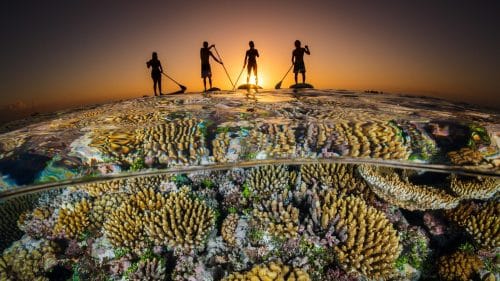Improving Environmental Quality by Planting 5000 Mangrove Seedlings in Pantai Mekar Village, Muaragembong

Pantai Mekar Village, located in Muaragembong District, Bekasi Regency, is one of the coastal villages that has a strategic role in supporting daily economic activities. This village is one of the centers of fish catch and aquaculture production that supports the economy of the surrounding community. However, the high economic activity has also triggered significant land conversion, especially in the mangrove forest area. Based on data from Lindungihutan.com, the area of mangrove forest in Muaragembong District in 2020 was only 1,028.64 hectares or around 9.81% of the initial area set by Perhutani, which was 10,481.15 hectares. This massive degradation has resulted in a decline in environmental quality that is directly felt by local communities. The loss of mangrove ecosystems not only affects ecological balance, but also threatens the sustainability of the lives of communities that depend on fish and marine products. Abrasion, seawater intrusion, and damage to public facilities are increasingly felt, disrupting the economic and social activities of coastal communities. This condition is a serious concern that requires immediate solutions. This is what must be the focus of our attention and concerns together.
As a real effort to improve the environmental quality in Pantai Mekar Village, the PPK Ormawa HIMITEKA Implementation Team launched a community service program in the form of mangrove planting. This program is called GEMARO (Gerakan Menanam Mangrove) and aims to rehabilitate degraded mangrove forest areas. Over a period of three months (July to September), 5,000 mangrove seedlings were planted in former pond land that was no longer productive. Planting was carried out in stages in six stages, with a total of 500 to 1,000 seedlings per stage. This activity involved close collaboration between the PPK Ormawa HIMITEKA Team and the Pantai Mekar Village community, and was supported by various parties such as Fishlog, the Village and Sub-district Governments, and local community organizations.
Mangrove restoration provides a variety of ecological and social benefits. According to Arkham et al. (2022), mangrove ecosystems provide a variety of ecosystem services, including:
1. Provider Services: Providing fish, wood, shrimp, fruit, and crustacean resources (shrimp and crab).
2. Regulatory Services: Acts as a barrier to abrasion, protection from storms and sea winds, and regulates sea water quality, captures sediment, and absorbs carbon.
3. Cultural Services: To be a place for education, tourism, research, and preservation of local culture.
4. Supporting Services: Providing nutrition, being a habitat for birds, snakes, monkeys, and a nursery ground for marine biota.
Mangrove planting may not have an instant impact in the short term, but it is a significant first step to gradually improve environmental quality. The existence of healthy mangroves will be an important support in maintaining the balance of nature and supporting the lives of coastal communities.
Let’s Contribute to a Better Future! We believe that real action in maintaining and restoring the mangrove ecosystem requires the participation of all parties. Therefore, we invite all readers to take part in this effort. You can contribute by supporting the mangrove restoration program, either through direct participation in planting activities, campaigns, public education, or support in the form of donations or collaboration. Every small step we take today will have a big impact on the environment and future generations. Let’s work together to create a better, healthier, and more sustainable coastal environment.
